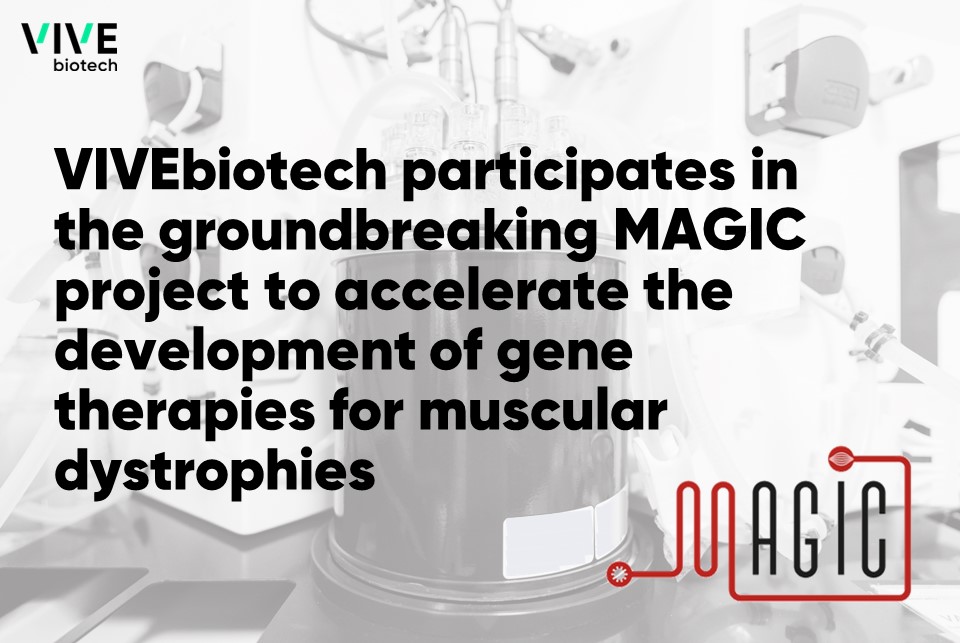The MAGIC (next-generation Models And Genetic therapIes for rare neuromusCular diseases) consortium brings together leading international institutions, SMEs and patient advocacy groups to accelerate the development of gene therapies for muscular dystrophies. By creating advanced human quasi vivo models, developing tissue-specific vectors, and exploring gene-editing strategies, the consortium aims to overcome the barriers that have hindered the translation of gene therapies into clinical applications. Through collaboration, innovation and a patient-centred approach, the MAGIC consortium is committed to making a meaningful impact on the lives of individuals affected by muscular dystrophies.
Muscular dystrophies are characterised by muscle weakness and wasting, causing impaired mobility and often decreased expectancy. Despite progress in genetic therapies for other neuromuscular disorders, there is currently limited evidence of clinical efficacy of gene therapy in muscular dystrophies. The MAGIC consortium aims to change this by developing advanced models of human skeletal muscle and innovative gene therapy approaches.
Led by Prof. Francesco Saverio Tedesco from University College London and The Francis Crick Institute, along with the support of Prof. Mario Amendola from Inserm and the Genethon Institute, VIVEbiotech is the only Spanish institution that is part of the MAGIC consortium. This ambitious four-year initiative jointly funded (~9.5M EUR) by Horizon Europe and UK Research and Innovation (UKRI), brings together 15 international partners from 9 countries:
- Academic institutions and research hospitals:
- University College London (UK)
- Inserm (France)
- Hannover University Medical School (Germany)
- Université Paris-Est Créteil Val de Marne (France)
- Cincinnati Children’s Hospital Medical Center (USA)
- Maynooth University (Ireland)
- King’s College London (UK)
- The Francis Crick Institute (UK)
- Small and medium-sized enterprises (SMEs):
- BI/OND Solutions (Netherlands)
- VIVEbiotech (Spain)
- ReiThera (Italy)
- Siegfried DiNAMIQS (Switzerland)
- Charitable organisations:
- Muscular Dystrophy UK (UK)
- Parent Project aps (Italy)
- Duchenne Data Foundation (Netherlands)
The primary goal of the MAGIC consortium is to create accurate humanised muscle models to enable precise development of gene therapies and genome editing strategies for muscular dystrophies. Bu using cutting-edge technologies such as microfabrication, microfluidics, and human stem cell differentiation, the consortium will engineer disease-specific muscle-on-chip devices. These models will allow researchers to assess safety and efficacy of novel gene therapies based on adeno-associated and lentiviral vectors specific to muscle cells. In the MAGIC consortium, VIVEbiotech will contribute to the development and manufacture of muscle-specific lentiviral vectors. They will be involved in the early stages of lentivector technology development to ensure that the main process steps are designed in a way that can subsequently be transferred to GMP. Subsequently, VIVEbiotech will produce the optimised lentiviral vector candidate on a large scale for pre-clinical use. In this way, VIVEbiotech will contribute to establishing a highly cost-effective, scalable and compliant process for the manufacture of muscle-specific lentiviral vectors.
Importantly, MAGIC actively involves multiple SMEs to facilitate the translation and exploitation of key project outputs, as well as national and international patient advocacy groups (Muscular Dystrophy UK, Duchenne Data Foundation, and Parent Project aps) to ensure that the patient´ perspective remains central to the research.
For more information on the MAGIC project, please visit https://magic-horizon.eu or contact us at: info@magic-horizon.eu.

